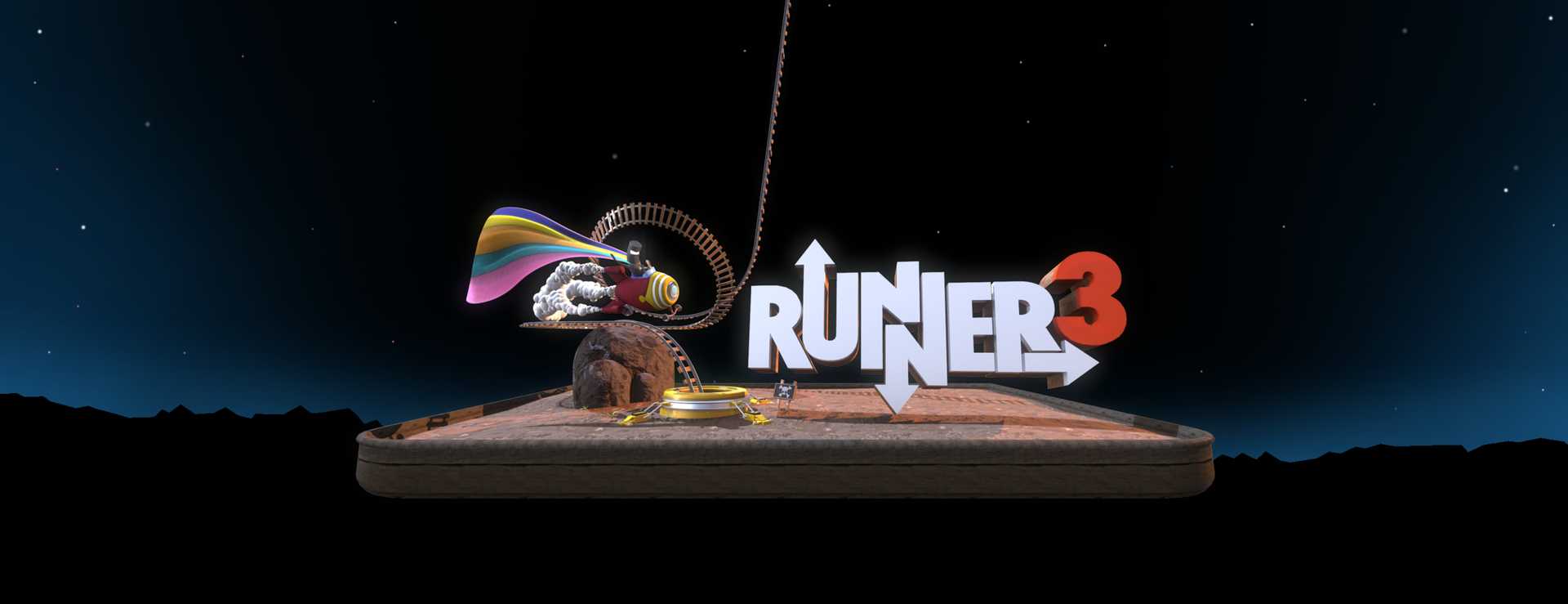好久没认真写评测了,虽然是英文的,但我还是想转到牛关来。
Runner3 is a bold successor of BIT.TRIP.RUNNER and Runner2, with radical changes to the gameplay and visuals. By doing such, devs took the risk of disappointing their fans. Indeed, several reviews deliver polarized messages, either “my favorite of the trilogy” or “runner3 is absolutely awful if you compare it to the previous games”.
Runner is the only title in the BIT.TRIP series with sequels, two but not one in particular, what makes it so unique? Rhythm game is a genre of music-themed action game that challenges a player’s sense of rhythm, games in this genre typically require players to press buttons or perform a sequence of action following the beat. Usually the players concentrate on the rhythm and partially ignore the visuals. However, Runner is centered on the visuals, as an action game normally would, the rhythm enhances the gameplay with catchy music and synchronized beats.
So the visuals actually matter a lot in Runner. Runner and Runner2 have plain, direct 2D visuals, with everything presented in a very straightforward manner. Runner 3 tries to enrich the gameplay by introducing a 3D view (lets say it’s 2.5D) with various camera angles. But the thing is, the visuals are too overwhelming and often obscure my rooted perception of the “rigid controls” from the first two games. Additionally, this raises a performance issue on my MBP, I had to turn all settings to the bare minimum, including the resolution, in order to reach a rather playable state. I usually blame OSX for it’s poor optimization and integration of games, but a friend of mine found the game quite demanding on Windows as well. The detailed visual thingy is overkill, especially for a game that requires you to make immediate decisions based on visual cues.
Previously, I’ve talked about “rigid controls” from the first two runner games, what does it mean exactly? To elaborate, let’s consider a single jump. Once you make the jump, you will be airborne for a while and the only thing you can control is the duration of the jump, that is, to drop faster by releasing the jump button prematurely. So Runner and Runner2 are all about choosing the correct moment to jump and deciding to make small hops or big jumps based on the situation.
Now, Runner3 presents… double jump, and ground slam, the ability to immediately slam onto the ground while airborne. The latter is a really good idea as it enhances the movement flow (the 9 impossible levels won’t be made possible without it) and gives the player an opportunity to recover an ill decided jump. However, the new movement set completely breaks the rigid playstyle that fans were anticipating. Personally, I’ve imposed an utterly stupid challenge on myself, that is, to beat the impossible levels with the bare minimum double jumps, just to rekindle the feeling of the rigid playstyle that brought me so much pleasure. Last, ground slam enhances the rhythm with percussion beats, sounds pretty sweet until you realize that the beats are almost absolutely desynchronized, a stain on the otherwise immaculate melody.
These are all the key aspects that other reviews might have overlooked. There are a lot of interesting topics worthy of discussion, such as collectables, difficulty balance, secret paths, retro levels, the puppet shows, the cutey patootie narrator, the infamous bullseye challenge, etc. But all of these are covered in various reviews, and I’m too lazy to paraphrase others’ thoughts and summate.
Don’t get me wrong, Runner3 is still a GREAT game, the music is even better than the first two games in my taste. Sequels should make experiments, good or bad, and learn from the mistakes. I praise the courageous effort in making so many bold decisions at once, and in fact, most of them turned out to be great. And to think about it, I’ve drained 73h in the trilogy, and it still feels like I could take another sequel.











